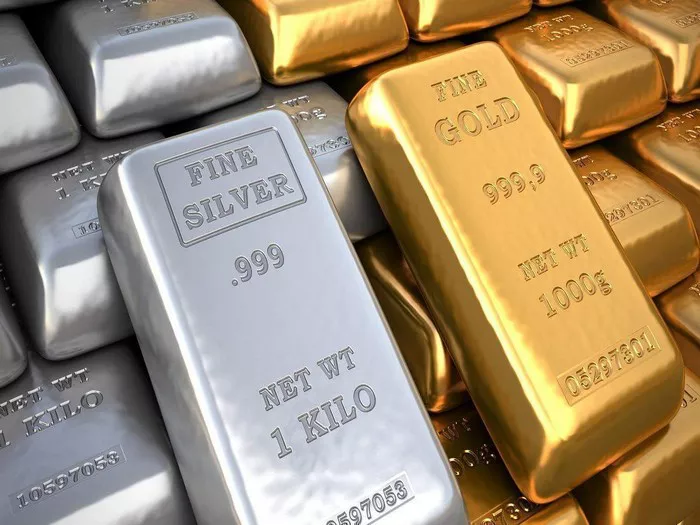I. Introduction to Gold Spot and Silver Spot Investments
Investors seeking to diversify their portfolios often turn to precious metals, with gold and silver being two prominent choices. Both metals have unique characteristics and historical significance, making them attractive investment options. In this comprehensive guide, we’ll compare Gold Spot and Silver Spot investments, exploring the key differences, factors influencing their prices, and considerations to help investors make informed decisions.
Defining Gold Spot and Silver Spot Investments
What Is Gold Spot? Gold Spot refers to the current market price of gold for immediate delivery. It represents the value of one troy ounce of gold at a specific moment in time and is a crucial metric for investors engaging in gold trading or investing.
What Is Silver Spot? Silver Spot, similarly, represents the current market price of silver for immediate delivery. Like Gold Spot, it reflects the value of one troy ounce of silver at any given moment, serving as a benchmark for silver transactions in the global market.
II. Key Differences Between Gold Spot and Silver Spot Investments
1. Price Differential
Gold typically has a higher spot price than silver due to its scarcity, higher value density, and demand as a store of value. The gold-to-silver price ratio is a key indicator of their relative values.
2. Volatility
Silver tends to be more volatile than gold. Its lower price and industrial demand contribute to larger percentage swings. Investors should consider risk tolerance when choosing between gold and silver.
3. Industrial Use
Silver has extensive industrial applications, contributing to its demand. It is used in electronics, solar panels, and medical devices. Gold, while used in technology, lacks the same level of industrial demand.
4. Market Liquidity
Gold generally has higher market liquidity than silver. The larger market for gold makes it easier for investors to buy and sell without significantly impacting prices.
III. Factors Influencing Gold Spot and Silver Spot Prices
1. Supply and Demand Dynamics
Supply and demand dynamics play a significant role in determining both gold and silver spot prices. Economic conditions, geopolitical events, and shifts in investor sentiment influence demand for these precious metals.
2. Inflation Hedge
Both gold and silver are often seen as hedges against inflation. Investors turn to precious metals to preserve wealth when there are concerns about currency devaluation.
3. Central Bank Policies
Central bank decisions, such as interest rate changes and monetary policies, can impact gold and silver prices. Investors should monitor central bank activities for potential market-moving events.
4. Industrial Demand
Silver’s industrial applications make it sensitive to changes in economic conditions. Economic growth or downturns can influence the demand for silver in various industries.
IV. Considerations for Investors
1. Portfolio Diversification
Both gold and silver can serve as effective tools for portfolio diversification. Investors may choose to include a combination of both metals to spread risk.
2. Investment Goals
Consider your investment goals when choosing between gold and silver. Gold is often viewed as a long-term store of value, while silver may be attractive for short to medium-term gains.
3. Risk Tolerance
Assess your risk tolerance before investing in precious metals. Silver’s higher volatility may be suitable for risk-tolerant investors, while those seeking stability may prefer gold.
4. Market Conditions
Monitor global economic conditions and geopolitical events that may impact the precious metals market. Adjust your investment strategy based on changing market dynamics.
V. FAQs: Navigating Gold Spot vs. Silver Spot Investments
1. Is silver riskier than gold?
Yes, silver is generally considered riskier than gold due to its higher volatility. The lower price of silver can result in larger percentage swings compared to gold.
2. Which metal is a better inflation hedge?
Both gold and silver are considered effective inflation hedges. Investors often turn to precious metals during periods of inflation to preserve their purchasing power.
3. Can I hold physical gold and silver in my investment portfolio?
Yes, investors can hold physical gold and silver by purchasing bullion, coins, or bars. Alternatively, they can invest in exchange-traded funds (ETFs) that track the performance of these metals.
4. Do gold and silver spot prices follow the same trends?
While gold and silver prices are influenced by similar factors, they may not always follow the exact same trends. The gold-to-silver price ratio reflects their relative values.
5. Are there tax implications for profits made in gold and silver investments?
Tax regulations on profits from gold and silver investments vary by jurisdiction. Investors should consult with tax professionals to understand specific tax implications in their location.
6. Can I use gold and silver as collateral for loans?
In some cases, gold and silver can be used as collateral for loans. Financial institutions may offer loans secured by physical gold or silver, depending on their policies.
7. Is it better to invest in mining stocks or physical metals?
The choice between investing in mining stocks or physical metals depends on individual preferences and risk tolerance. Mining stocks may offer exposure to price movements, while physical metals provide tangible assets.
8. How often do gold and silver spot prices change?
Gold and silver spot prices can change frequently throughout the trading day as market conditions evolve. They are influenced by global economic factors, geopolitical events, and overall market sentiment.
In conclusion, the decision between Gold Spot and Silver Spot investments depends on various factors, including investment goals, risk tolerance, and market conditions. Both metals have their unique advantages, and a well-informed investor may choose to include a combination of gold and silver in their portfolio to achieve diversification and navigate the ever-changing landscape of precious metal investments.

